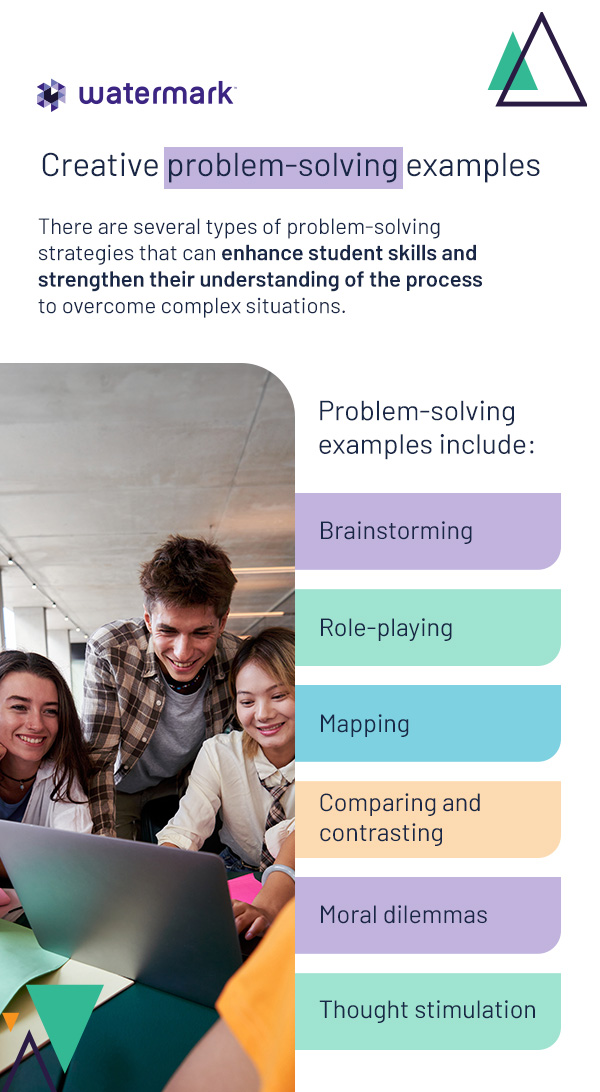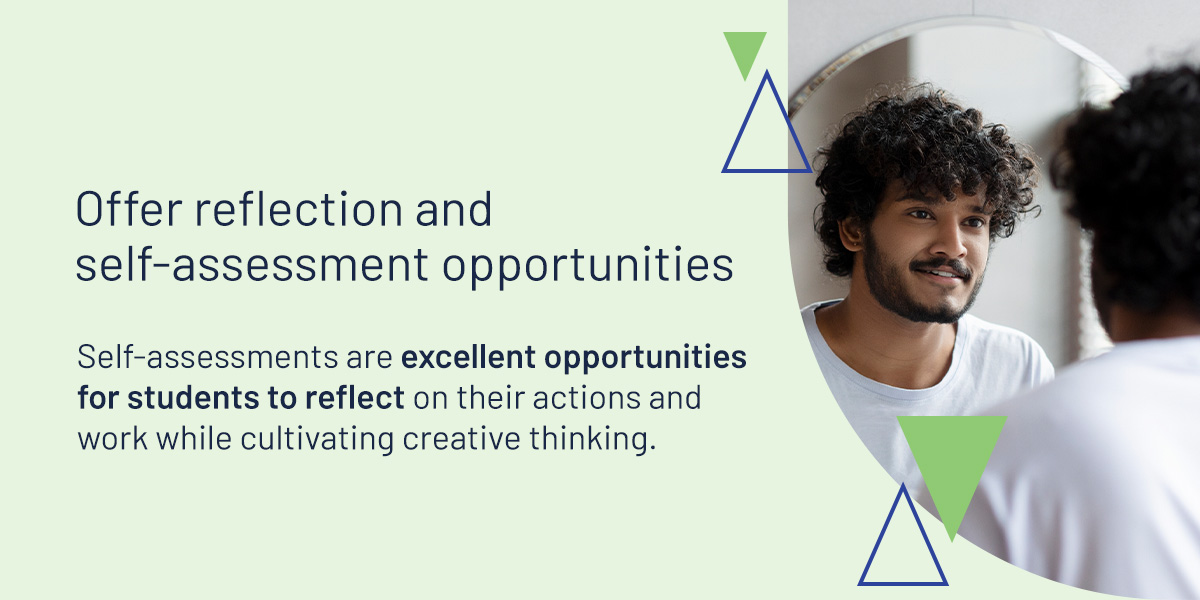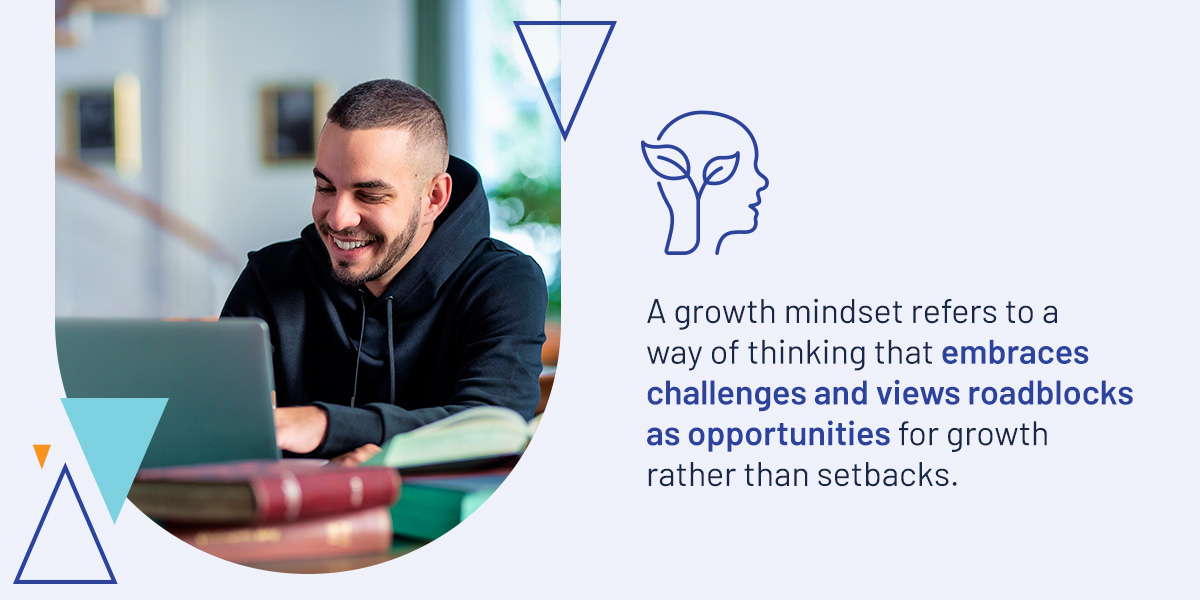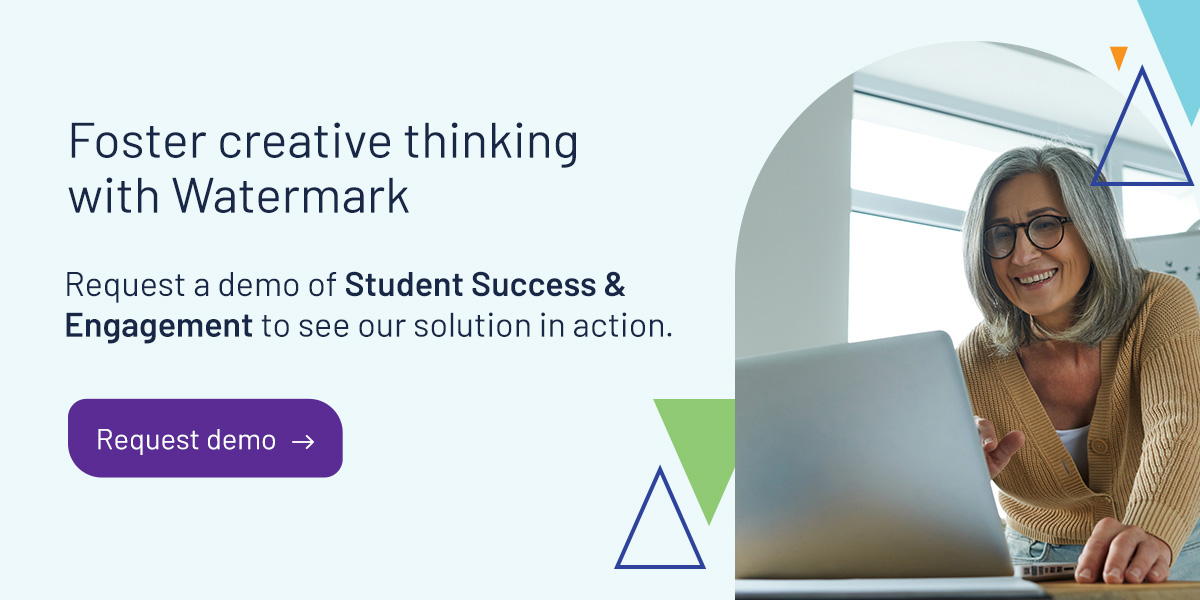



Critical thinking and creative problem-solving are essential skills for higher education and beyond. These skills drive decision-making and empower people to find success pathways. Teaching creative problem-solving is necessary to prepare students for a productive academic career, future job positions, and life.
Incorporating critical thinking and creative problem-solving strategies can be simple and engaging. Whether you want to find classroom activities or need to find real-world simulations that prompt students to make connections to their future career paths, there are many ways you can help students develop these skills.
Creative problem-solving and critical thinking are two essential skills every student should hone. These abilities can boost student confidence, foster new thinking strategies, and engage students in course materials. Higher education administrators and instructors should recognize the importance of these skills and craft engaging ways to incorporate activities to strengthen them in the classroom and in real-world scenarios. Benefits of problem-solving skills include:
There are several types of problem-solving strategies that can enhance student skills and strengthen their understanding of the process to overcome complex situations. Leveraging various types of examples can give students the opportunity to interact with new ideas and ways of reaching a solution. Problem-solving examples include:
Brainstorming empowers students to consider several ways to overcome a problem. Many times, brainstorming involves creating lists and considering various elements that work together. For example, students can brainstorm essay topics, historical figure significance, or even how to create a personalized path to graduation. In any of these scenarios, students must consider several facets and evaluate the pros and cons of each to reach the best conclusion.
While this strategy may seem like a simple practice, it can provide the foundation for informed decision-making and is applicable to academic and real-world situations.
Dramatic situations and role-playing activities allow students to act out a situation and imagine the behaviors and actions of another person. There are many ways to implement these activities in a variety of academic settings. For example, nursing students can create a health care setting to depict reactions and suggestions for responding to a serious medical issue. Criminal justice programs can create a legal environment, acting as litigators, attorneys, police officers, and prosecutors appearing for a hearing or trial.
Specific classes can also implement role-play, such as composition or writing classes asking students to act out a scene or respond to situations as a specific character would. Advisors can also implement role-playing activities through mock interviews for grad school or a career position.
The mapping process is similar to brainstorming. This strategy involves starting with one central idea and creating branches that support the main topic. For example, a broad topic could be student resources on campus, and branches could include locations and support such as a writing center, career program, mentorships, advisors, and scheduling centers. This method can help students visualize solutions and break complex topics into smaller components that are easier to navigate.
Compare and contrast tasks are one of the simplest ways to encourage students to analyze information. This strategy spans well beyond preferences or which item came before the other. Comparing and contrasting asks students to make connections between two things. For example, how can two historical figures compare in terms of beliefs, accomplishments, and titles? What are common themes between two novels, and how do the authors discuss them differently? What are the views of several philosophers, and how do these ideas relate?
Moral dilemmas can be one of the best ways to introduce real-world scenarios into the classroom. This method requires students to make a decision by evaluating two or more complex sides of an argument or idea. Some of the most well-known moral dilemmas discuss topics such as stealing when hungry, vigilante justice, or legal consequences such as the death penalty. However, instructors and advisors can easily apply this method to a student’s career path. Many professionals face moral dilemmas, and personalizing these questions can strengthen student understanding and engagement.
This method involves crafting scenarios, describing these situations in great detail to others, and then evaluating how well you translated the real event. Along with prompting students to determine the most important pieces of information, thought stimulations enhance communication by requiring students to be as specific and clear as possible.
Advisors and instructors can teach problem-solving by implementing various strategies. Utilizing a blend of classroom activities and real-world applications can strengthen student understanding and provide ample opportunities for engagement. Best practices for teaching problem-solving include:
Experiential learning promotes problem-solving by developing real-world simulations and prompting hands-on activities to interact with different solutions. This approach relies on meaningful feedback, personal relevance, and active participation. Some students may find this strategy more effective for absorbing information than listening or reading about a topic. Often, experiential learning encompasses experiences such as field trips, service-learning opportunities, internships, simulations, and other forms of project-based learning.
This strategy encourages collaboration, often prompting participants to interact with each other to find the most effective solutions or identify pain points quickly. Experiential learning allows students to see the outcomes of their actions firsthand to understand their impact on other people and events. Feedback from advisors, instructors, industry professionals, and other peers can provide new perspectives and approaches for enhanced efficiency and stronger connections.
Consider these examples of experiential learning for various fields of study:
Self-assessments are excellent opportunities for students to reflect on their actions and work while cultivating creative thinking. These assessments direct students to recall their experiences and make strong connections between course content and real-world applications.
Instructors can collect course evaluations and surveys to spark self-assessment while obtaining valuable insights about student progress and content areas needing improvement. Advisors and mentors can encourage self-assessment through actions such as journaling or progress checks. These activities empower students to identify their strengths and weaknesses while interacting with new tools and methods to determine their styles and preferences for decision-making.
Reflection opportunities can also include using tools that depict trends in personality types or group traits. For example, the Myers-Briggs Type Indicator measures personality traits, values, and skills. This test assigns a personality type to the user, complete with tips for productivity, learning styles, and more. This information can provide a foundation for students trying to learn more about their processes and find direction for trying new methods.
Teamwork and collaboration can make a more engaging student environment. Collaboration empowers students to interact with new ideas, learn to leverage their strengths and weaknesses alongside those of others, and practice active listening. Group projects require students to work toward a common goal, prompting them to share problems and solutions. A recent study highlighted the effectiveness of collaborative problem-solving, detailing that collaborative problem-solving improves cognitive skills and critical thinking skills.
Along with interacting with allowing people to interact with new perspectives, group work can encourage students to take risks. Students may be more likely to take calculated risks if they have a team supporting their actions, prompting them to consider actions they may not have sought if they were completing independent work. Teamwork also encourages personal growth by requiring students to share information, learn from the mistakes of others, and better identify blind spots about personal weaknesses. Students can use this information to inform future decisions and feel more confident in their decisions and outcomes.
Higher education students constantly face new challenges. From moving to a new location to navigate classes to leveraging finances for a sustainable future, students have to face many roadblocks that can hinder their path to graduation. While obstacles will always present themselves at one time or another, how a person handles these situations will impact their personal growth and success outcomes.
A growth mindset refers to a way of thinking that embraces challenges and views roadblocks as opportunities for growth rather than setbacks. Fostering a growth mindset empowers students to engage in more calculated risks in the hopes of finding innovative solutions and success. As students interact with more challenges, they must exercise their critical thinking and problem-solving abilities to find solutions, further enhancing their skill sets.
You can promote a growth mindset by:
Technology can significantly impact the educational experience, and advisors and instructors can leverage these tools to enhance problem-solving skills. Digital resources allow students to interact with a plethora of information and resources to guide their decisions. Programming languages, data analytics platforms, and simulation software can ensure students have the information they need to make informed decisions and apply their knowledge to real-world problems.
Other ways technology can enhance problem-solving include:
Creative problem-solving is a crucial skill for higher education students, and teaching this ability is one of many ways your institution can empower student success. You can also ensure success by leveraging the right technology to support your students from the very beginning of their academic journey.
Watermark empowers higher education institutions to maximize their impact on student success. Our solutions provide real-time student insights, depicting progress, trends, at-risk actions, and more. Watermark Student Success & Engagement supports colleges and universities through predictive analytics, exceptional connectivity, and advanced reporting that can lessen workloads, streamline productivity, and align teams with institutional goals. Request a demo of Student Success & Engagement to see our solution in action.






























































































































































































































































































































































































Submit this form to schedule a meeting with one of our reps to learn more about our solutions. If you need customer support instead, click here.



